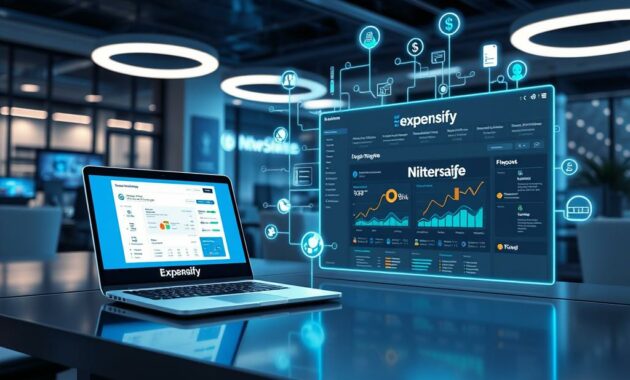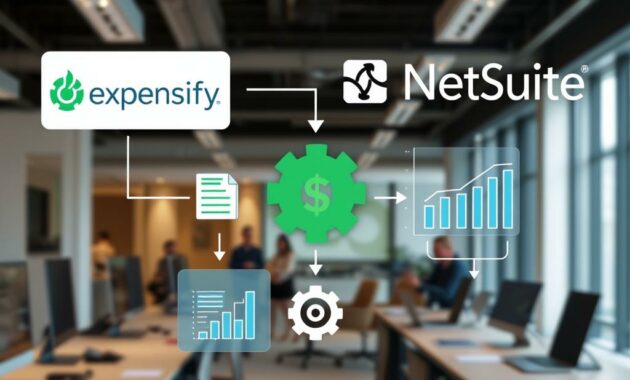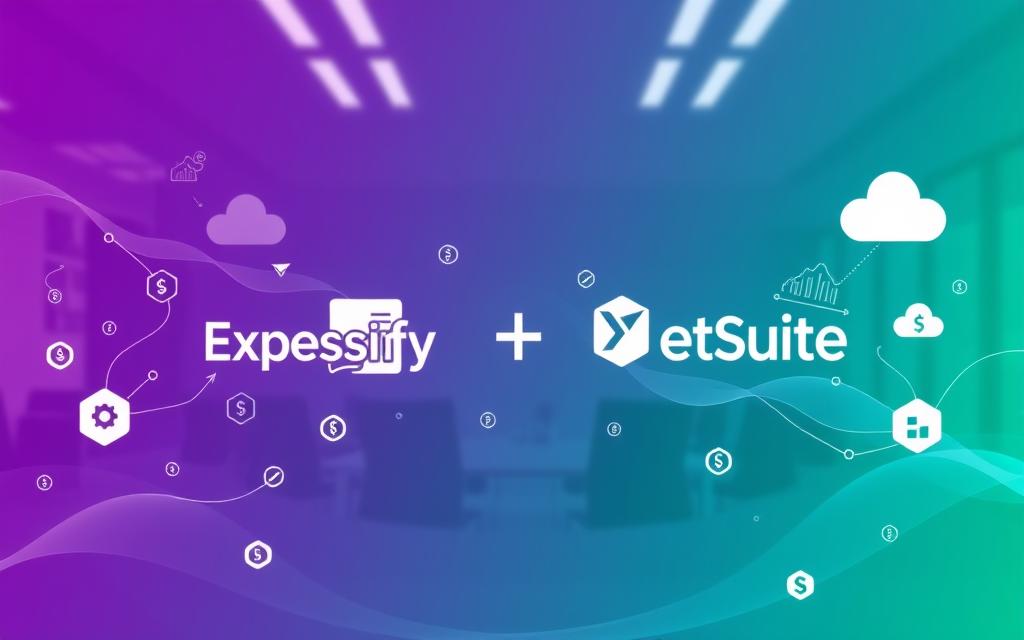Welcome to your comprehensive resource on the expensify and netsuite integration. In today’s fast-paced business environment, it’s crucial to streamline expense management and simplify financial processes. This guide will help you understand how the powerful combination of Expensify’s expense reporting capabilities and NetSuite’s robust financial management tools can transform your business operations. You’ll discover how this integration can enhance data accuracy, provide insights, and improve the overall efficiency of managing your expenses.
What is Expensify and How Does It Work?
Expensify, a cloud-based expense management platform, is engineered to simplify the expense reporting process for enterprises of diverse sizes. It automates mundane tasks, freeing users to concentrate on critical work responsibilities. The intricacies of Expensify become apparent upon delving into its comprehensive functionalities and practical applications.
Overview of Expensify Features
Expensify boasts a suite of features meticulously crafted to elevate your expense management experience. Key functionalities include:
- Receipt scanning: Seamlessly capture and organize receipts via your smartphone.
- Expense categorization: Automatically categorize expenses into customizable categories.
- Real-time reporting: Access immediate insights into spending patterns and budget adherence.
- Smart invoicing: Generate and dispatch invoices directly from the platform.
- Approval workflows: Streamline the approval process for expenses through customizable workflows.
Benefits of Using Expensify
The advantages of leveraging Expensify are substantial for entities aiming to refine their expense management practices. This tool promises:
- Enhanced productivity: Automating expense reporting minimizes manual task time.
- Reduced processing time: Transactions are recorded and reported in real-time, accelerating approvals and reimbursements.
- Improved employee satisfaction: User-friendly features enhance the experience for employees submitting expenses.
Common Use Cases
Expensify caters to a myriad of business requirements, rendering it adaptable and effective across various sectors. Its applications span:
- Small businesses: Seamless management of travel expenses.
- Larger companies: Consolidation of multiple expense reports into a unified platform.
- Organizations: Automation of approval processes to conserve time and reduce manual errors.
Understanding NetSuite
NetSuite emerges as a paramount cloud-based ERP system, amalgamating essential business functionalities into a unified platform. Delving into the essence of NetSuite unveils its all-encompassing scope, spanning finance, customer relationship management (CRM), e-commerce, and inventory management.
Key Features of NetSuite
The NetSuite features prominently include real-time data accessibility. Customizable dashboards empower businesses to monitor performance metrics with precision. Comprehensive reporting capabilities ensure that decision-makers possess all requisite information at their disposal. This integration facilitates companies in responding promptly to market fluctuations, thereby bolstering their competitive stance.
Benefits for Businesses
The benefits of NetSuite are instrumental in propelling business success. It enhances decision-making through data-driven insights, streamlines operations by automating mundane tasks, and offers scalability for growth. These attributes are crucial in cultivating a responsive and agile business environment.
Industries That Benefit from NetSuite
Varied industries derive significant advantages from NetSuite implementation. Retail entities benefit from its inventory management capabilities, ensuring efficient stock tracking. Manufacturing firms harness real-time data to refine production processes. Professional services firms profit from tools that enhance project management and billing, while software companies value integrated financial and project tracking. Each sector experiences substantial benefits, tailored to their unique requirements.
Why Integrate Expensify with NetSuite?
The fusion of Expensify with NetSuite engenders a synergy that profoundly benefits your enterprise. This amalgamation refines your expense reporting mechanisms, optimizes data management, and unveils deeper financial insights. An examination of the integration’s advantages follows.
Streamlining Expense Reporting
The integration enables a seamless dialogue between Expensify and NetSuite. Automatic data synchronization streamlines your team’s expense reporting process. The eradication of manual data entry not only conserves time but also guarantees enhanced data accuracy, thereby fortifying the efficacy of your reports.
Improving Data Accuracy
One of the primary motivations for why integrate Expensify with NetSuite is the marked enhancement in data precision. Automated data transfer minimizes errors associated with manual input. This accuracy ensures that your financial reports accurately depict your financial state, facilitating more astute decision-making.
Enhancing Financial Visibility
The integration facilitates unparalleled financial visibility. Comprehensive reports generated through this synergy enable effortless tracking of expenditure patterns. This clarity empowers budget management and enhances forecasting capabilities, offering a more nuanced understanding of your financial standing.

How to Set Up the Integration
Initiating the Expensify NetSuite integration can profoundly augment your accounting efficacy. Prior to embarking on the integration process, it is imperative to acknowledge the fundamental prerequisites for a successful configuration.
Pre-Integration Requirements
To effectively establish the Expensify NetSuite integration, several prerequisites must be fulfilled:
- Confirm possession of administrative privileges in both Expensify and NetSuite.
- Conduct a thorough examination of your prevailing accounting processes.
- Compile requisite data encompassing expense categories and user roles.
Step-by-Step Setup Process
The integration procedure necessitates a methodical, stepwise approach:
- Access both your Expensify and NetSuite accounts.
- Proceed to the integration settings within Expensify.
- Initiate the account linkage by designating NetSuite as your integration partner.
- Configure the expense category mapping to harmonize with your NetSuite configurations.
- Adhere to the comprehensive documentation offered by both entities for any bespoke instructions.
Adherence to these directives will forge a unified connection between the platforms, thereby ensuring the unimpeded flow of expense data.
Common Challenges and Solutions
Integrating Expensify with NetSuite may present several common integration challenges. These include data mapping problems, syncing errors, and user access conflicts. Understanding these issues is crucial for implementing effective solutions. This section delves into these challenges, offering practical solutions to improve your integration experience.
Data Mapping Issues
Data mapping is essential for ensuring expenses are correctly aligned between Expensify and NetSuite. Misalignment can result in incorrect records and reporting discrepancies. To address these issues, meticulously review your mapping settings. Verify that each expense category in Expensify corresponds to the correct category in NetSuite. Regularly update these mappings to reflect any changes in your expense categories, ensuring accurate data flow.
Syncing Errors
Syncing errors may stem from misconfigured accounts or transient network issues. These errors can disrupt data transfers and create confusion. To troubleshoot, initiate a re-sync of your accounts. Also, verify connection settings to confirm correct linking between platforms. Regular monitoring can help identify potential sync issues before they escalate.
User Access Conflicts
User access conflicts can arise when permissions are not set appropriately across the two systems. This can prevent team members from accessing the information they need. To resolve these conflicts, conduct a thorough review of user roles and permissions in both Expensify and NetSuite. Ensuring compliance with defined user roles will help avoid access-related issues and promote a smoother workflow.
Best Practices for Using Expensify with NetSuite
To fully leverage the integration of Expensify and NetSuite, adherence to best practices is paramount. Tailoring these practices to your organization’s specific needs optimizes workflows and ensures the accuracy of financial reporting.
Setting Up Custom Workflows
Design custom workflows that mirror your business processes. Such customization enhances accountability and expedites the expense approval process. By configuring these workflows to your team’s needs, expense tracking becomes more streamlined. The integration of both platforms’ capabilities addresses unique challenges, thereby enhancing efficiency.
Regular Data Reconciliation
Regular data reconciliation ensures that Expensify and NetSuite records are in sync. This practice mitigates discrepancies that could complicate financial oversight. Schedule periodic checks to verify that all records align, thereby enhancing transparency and reducing errors in reporting. This approach leads to improved data integrity and more informed decision-making.
Training Your Team
Invest in comprehensive training sessions for your team to maximize the integration’s effectiveness. Educating employees on both Expensify and NetSuite empowers them to use the systems to their fullest potential. Focus on the integration’s features, which can significantly boost productivity and compliance. A well-informed team will adapt to processes more efficiently, ensuring seamless workflows.

| Best Practice | Description | Benefits |
|---|---|---|
| Custom Workflows | Tailored expense management processes | Increased efficiency and accountability |
| Data Reconciliation | Regularly verifying records for accuracy | Enhanced data integrity and transparent reporting |
| Team Training | Educating staff on system features | Improved productivity and compliance |
Tips for Maximizing the Integration Benefits
To fully exploit the synergy between Expensify and NetSuite, it is imperative to adopt strategic approaches. Leveraging the comprehensive reporting functionalities of both platforms can unveil profound insights into your financial outlays. This understanding empowers you to refine your budgeting methodologies, ensuring optimal resource allocation. Moreover, diligent monitoring of expense patterns facilitates the identification of cost-saving opportunities, thereby enhancing your financial performance.
Utilizing Reporting Features
The reporting functionalities embedded within Expensify and NetSuite represent instrumental tools for evaluation. By crafting in-depth reports, you can dissect various facets of your expenditures. The deployment of these features enables the visualization of data, facilitating the dissemination of insights and prompting corrective actions.
Monitoring Expense Trends
It is vital to establish a consistent practice of tracking expense trends. This practice is indispensable for detecting shifts in your spending patterns over time. Vigilance in monitoring these trends enables you to adjust your budgets proactively, ensuring that resources are directed towards the most critical areas. Periodic assessments of expense data can uncover unforeseen expenditures, thereby maintaining financial discipline.
Leveraging Automation Tools
Integrating automation tools into your operational framework can markedly enhance process efficiency. Automating approval workflows and configuring reminders for expense submissions can significantly reduce manual labor. This not only boosts productivity but also fosters timely financial oversight, allowing your team to concentrate on tasks of greater strategic importance.
Troubleshooting Integration Issues
The integration of Expensify and NetSuite necessitates a meticulous approach to troubleshooting. Users frequently encounter obstacles during this process. Familiarity with common error messages is essential for swift resolution of these problems.
Common Error Messages and Fixes
Typical errors include syncing failures and discrepancies in data. Address these by examining your account configurations. Verify that all settings are congruent in both Expensify and NetSuite. If the problem continues, attempt to resynchronize the data. Below is a table summarizing common errors and potential fixes:
| Error Message | Possible Cause | Suggested Fix |
|---|---|---|
| Syncing Failure | Account configuration error | Review settings in both platforms |
| Data Discrepancy | Mismatch of data fields | Check data mapping and adjust fields |
| Authentication Error | Expired or incorrect credentials | Update login information and retry |
Contacting Support
Continued issues necessitate the utilization of support resources from Expensify or NetSuite. Their teams are adept at addressing specific problems and offering customized guidance.
Community Resources
Utilizing community resources can significantly enhance your troubleshooting endeavors. Forums and knowledge bases present collective experiences and strategies from users who have overcome similar hurdles. Interaction with the community often yields rapid and effective solutions for your troubleshooting Expensify NetSuite challenges.
Future of Expensify and NetSuite Integration
The trajectory of Expensify and NetSuite integration is marked by an array of possibilities, driven by the relentless march of technological progress. Anticipate the introduction of features designed to elevate user engagement, deliver sophisticated analytics, and bolster automation functionalities. These innovations will be crucial for enterprises aiming to refine their expense management strategies in a rapidly intensifying market environment.
Upcoming Features to Look For
On the horizon, expect the integration to undergo significant enhancements, facilitating a more fluid exchange of data between Expensify and NetSuite. The emphasis on mobile-centric solutions and the integration of artificial intelligence analytics will empower you to make more informed decisions, leveraging real-time insights. Staying abreast of these advancements is imperative to fully exploit the capabilities of your financial software.
Trends in Expense Management
Recognizing prevailing expense management trends is essential for your organization’s success. The trend towards mobile-centric platforms and adaptable integration options is gaining momentum. Automation’s prominence will enable further process streamlining, enhancing operational efficiency. Vigilance in tracking these trends is critical for adapting and excelling in the dynamic financial sector.
How to Stay Updated
To remain current with the evolving Expensify NetSuite integration, consider subscribing to newsletters from both entities. Participation in community forums and following pertinent blogs will also ensure you are well-informed about best practices and emerging trends. Proactive information-seeking positions you at the vanguard of expense management solutions.



